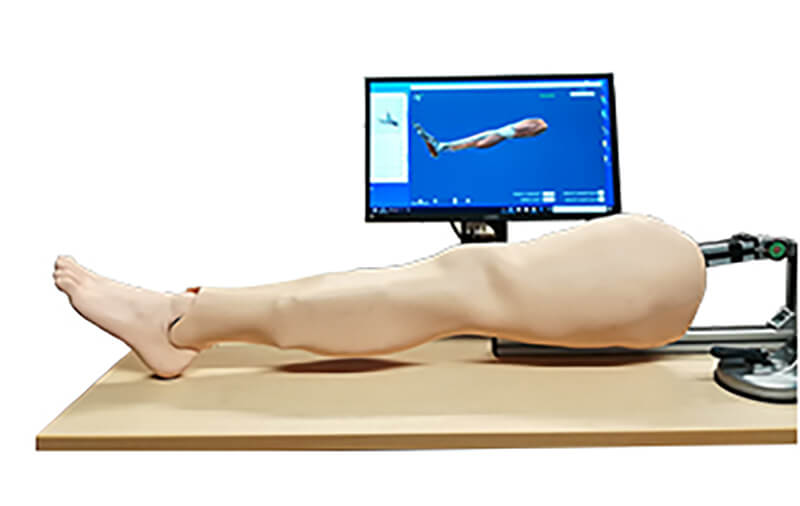
CEA List—a leader in haptic technologies—started developing its first training platform in 2011. Dubbed Skills, this tool provides a realistic way of simulating mandibular osteotomy surgery. CEA List, a member of the Carnot Network, leveraged its close relationships with surgeons, the Institut Faire Faces (IFF) headed by Prof. Bernard Devauchelle, and SimUSanté, the healthcare simulation and training center, to tackle this new challenge. CEA List and digital anatomical solutions provider Anatoscope worked together on a project using haptic simulation of human anatomy to familiarize future doctors with the forces they will feel during a clinical examination or therapeutic procedure.
Specifically, the researchers developed a knee examination training tool based on magneto-rheological brake technology. This technology mimics the sensations experienced when diagnosing torn ligaments and is perfectly suited to simulating knee joint laxity. During a clinical examination, medics most often feel the reactive forces that oppose the movement that they themselves are applying. These reactive forces can easily be reproduced using the brakes developed.
SimUSanté at Amiens University Medical Center has since successfully demonstrated this innovative technology. The teams now plan to incorporate it into a specialized leg training tool or full-size dummies in the near future. Continuing its work with the IFF and Anatoscope, CEA List’s next step is to develop even more complex solutions, in particular to simulate mandibular dislocation reduction.
Read article at http://www.cea-tech.fr/